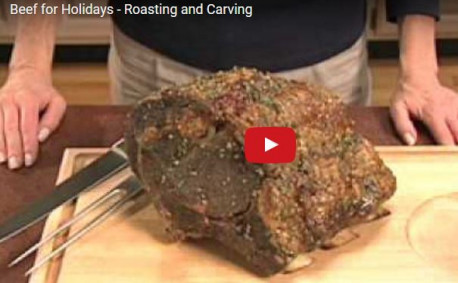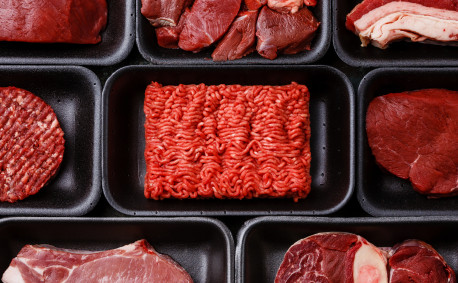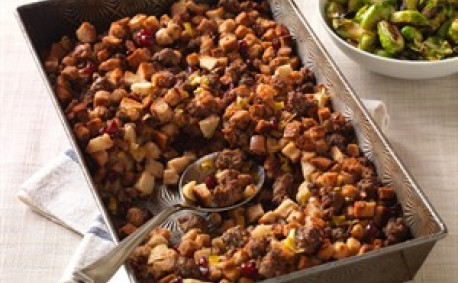Beef Makes Holiday Entertaining Easy and Delicious
Throughout most of the year, we’re happy to prepare a quick, simple meal. But, during the holidays, we tend to crave something a little more lavish for a festive atmosphere. We want jaws to drop and mouths to water when we set our main dish on the table.
Serving a delicious beef roast will get this exact reaction from your guests! Premium roasts such as ribeye, rib and tenderloin are very popular during the holidays. However, more economical roast choices — round tip, top sirloin and eye round — are great options as well. No matter which you choose, your guests are certain to ask for seconds.
So, how do you get the most from your holiday roast? Below are a few simple tips to make it easy on the cook and special for the guests.
- Pre-order the type and size roast you need from the supermarket or butcher shop. It’s a busy season and this is an easy way to give you peace of mind that the cut you want will be available!
- Plan your quantity by cut. The amount of beef you’ll need varies by the cut. For example, boneless roasts yield four three-ounce servings of cooked, trimmed beef per pound. On the other hand, a bone-in rib roast yields two-and-a-half three-ounce servings per pound. Refer to the chart pictured for guidelines that will help determine what size roast to purchase.
- Choose meat last when you’re shopping to ensure the beef stays as cold as possible.
- Refrigerate or freeze roasts as soon as possible after purchasing. Roasts wrapped in transparent film can be refrigerated three to four days (or frozen up to two weeks) without rewrapping.
- Defrost frozen roasts in the refrigerator to prevent bacterial growth. Allow four to seven hours per pound for a large roast and three to five hours per pound for a small roast. Repeat: Do not defrost at room temperature!
- To cook: Place roast (directly from the refrigerator), fat side up, on rack in a shallow roasting pan. If using a rib roast, you don’t need a rack as the ribs form one naturally. Season roast with herbs and spices, as desired. Insert an ovenproof meat thermometer so the tip is centered in the thickest part of roast, not resting in fat or touching bone. Do not add water or cover the roast.
- To prevent overcooking, remove the roast from the oven when the thermometer registers 10° F below desired doneness and let it stand for 15-20 minutes tented with aluminum foil. While it’s standing, the temperature will rise to the desired doneness.
- For medium rare (145° F) remove roast from oven when thermometer registers 135° F.
- For medium doneness (160° F) remove roast when temperature reaches 150° F.
- As the roast rests and the temperatures rises, the juices will redistribute, making carving easier.
- A sharp carving knife is a must! For uniform slices, hold the knife at the same angle for each cut. Rib, ribeye and tenderloin roasts can be sliced ½ to ¾ inch thick. Sirloin tip, sirloin steak, eye round and tri-tip should be ¼ inch thick or less.
Now all that’s left is to sit back and enjoy your delicious roast. Oh, and be prepared to carve out seconds!




